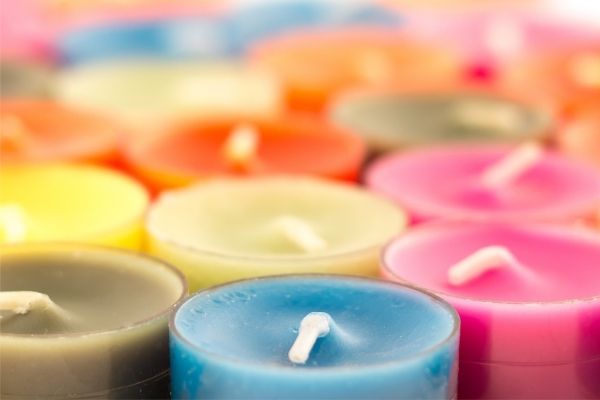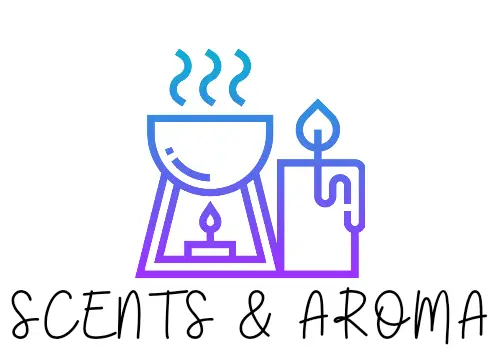Beeswax is a natural substance produced by honeybees for building their combs inside their hives. It has a unique scent and you can use it to make soaps, polishes, crayons, cosmetics, etc in addition to candles. Candles made from beeswax tend to be more expensive but burn cleaner and longer than those made from paraffin wax. They do not create candle soot, or drip since they are 100 percent organic. Have a read of this guide to see how Beeswax candles actually clean the air in your home.
Although beeswax candles may vary in their natural color from white to yellow as seen in the majority of them. You can still add other colors that suit your taste while making your beeswax candle.

Why Are Beeswax Candles Usually Yellow?
A few basic factors can affect the color of your beeswax candle. The first is the process of production, how much you filtered the wax, and how well you refined it. Another factor lies on the type of flower plants the bees foraged on. For instance, if the bees forage so much on clover, the beeswax color would be light. The color would get darker when they forage on fireweed or buckwheat.
However, beeswax candles are usually yellow because beeswax comes mainly in golden color which turns yellow after being refined. Most times, bees forage on pollen and propolis – a resin from the bark and leaf buds of certain trees. These feeding habits are what make them produce golden-colored beeswax. It’s important to note that yellow beeswax is a completely refined product. Whereas the whitish ones are bleached naturally via gradual exposure to air, moisture, and sunlight.
Can You Color Beeswax Candles With Candle Dye?
While processing beeswax candles, the substance may tend to lose its color. Some of these processes like the use of chemicals or exposure to light blech out the natural color entirely. Under this condition, you may want to recolor your beeswax candle. But aside from using crayons, food coloring or plant-based dyes can you color beeswax candles with candle dyes?
The answer is yes, Candle dye is a synthetic chemical made especially for coloring various candle wax. They are commonly made from an oily chemical substrate known as anilines which are soluble in water. Candle dyes can come in block, flake, or liquid form and they provide optimal color in your beeswax candles. Liquid Candle dye is regarded as the best coloring substance for candle production because it provides a liquid-to-liquid homogenous mix.
Moreover, when using flakes and block candle dyes, you should ensure the dye particles dissolve completely in the beeswax. This will help prevent wick clogging issues and your color will be distributed evenly. Using the right proportion of candle dye to color your beeswax candle will make the entire coloring process simple and easy. You can start and finish in a couple of minutes with a little effort so long as you follow the right steps.
Note that fragrance oils like those with high volumes of vanillin may alter the resultant color of your beeswax candle. Essential oils like sweet orange can also affect the finished color either immediately or over time. This is why color testing would be required as you add candle dye into the beeswax. Generally, dyes are sensitive to UV light and should be stored in a shaded area. Do not expose it to bright light to avoid discoloration.
Is It Safe To Color Beeswax Candles?
It’s safe when you use oil-soluble dyes as it guarantees a perfect finishing, unlike pigment-based colors. The latter is inorganic hence does not dissolve well (or insoluble) in beeswax which is a major disadvantage. After producing your beeswax candle the undissolved particles will clog the wick and get stuck in its weave.
When this happens, the wick will no longer have access to enough melted wax to keep the flame lit. Then, the flame goes off. A good example is Mica powder. However, to ensure total safety while coloring your beeswax candle at home, note the following rules;
- If you are using a non-liquid dye, ensure to add it when the beeswax is still very hot at around 140 to 150oF.
- Ensure you measure the right quantity. Use ¼ teaspoon to 1 pound of beeswax if you desire a medium color shade. Then, ½ teaspoon to a pound wax for dark shades.
- While melting your beeswax, be careful not to use explosion-ready containers. This has become a common practice for new candle makers. They believe they can put their candle blend in any container that can hold water. They forgot that not all containers can withstand high heat without exploding and using them poses a risk to their health.
However, using an old container is also not ideal, many materials expand a lot with heat and may eventually burst. Go for glass containers manufactured in compliance with ASTM 2179 standard. For your safety and that of your surrounding, never use the following items while trying to color your beeswax candle ;
- Plastic of any kind will melt
- Wooden containers like coconut shells – it’s flammable
- A thin-walled glass that is not tempered to withstand heat –will shatter.
Conclusion
Beeswax is a wonderful base for homemade candles, it’s natural, readily available, and hypoallergenic. You don’t need any special equipment while coloring it with a candle dye. When choosing a color for your beeswax candle consider the natural yellow tint color it already has. This will help you know the next color combination to add to arrive at your desired result.
For instance, to get a green tint, you may need to add a blue candle dye to your melted beeswax. Blue reacts with yellow to produce green etc. During the coloring process, ensure you mix the candle dye and the beeswax thoroughly irrespective of the candle dye type. This will enable you to get a perfect blend that will burn evenly without the interruption of any clogged dye particles.
- Can You Put Perfume In A Humidifier? (Read First) - September 17, 2022
- Can You Put Essential Oil In A Steam Mop? (Safety Advice) - September 17, 2022
- How To Make Lavender Oil At Home ( Candles And Diffusers) - September 9, 2022
